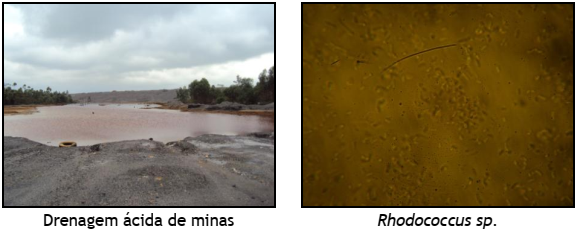Biotechnology applied to the treatment of AMD
During coal mining activities, acid mine drainage (DAM) is formed. This effluent, generated from a series of reactions involving both chemical and biological processes, mainly through the oxidation of pyrite, is characterized by its high acidity and high concentrations of metal sulphates (mainly iron, aluminum, manganese sulphates , magnesium, zinc and copper) and organic compounds.
The DAM represents great environmental risks, in particular, water impacts, consequence of the solubilization and mobilization of heavy metals.
Due to its harmful potential, several techniques have been studied for the treatment of AMD, and the conventional treatment is carried out by neutralizing and precipitating metals in the form of hydroxides. However, other processes have been studied such as selective precipitation, ionic extraction, biosorption, bioremediation, biological passive treatment and adsorption. The focus of the study is biosorption applied to the treatment of effluents contaminated with metals from coal mining.
The biosorption process is based on the ability of some types of biomass to concentrate and bind heavy metals from dilute aqueous solutions through their cellular envelope. This process is considered environmentally friendly, as it has some advantages when compared to conventional methods, such as: low operating cost, minimization of the volume of chemical and / or biological sludge to be discarded, high efficiency in the treatment of diluted effluents, reuse of the biosorbent and no nutrient requirements when biomass is inactive. As a biosorbent agent, a bacterium of the genus Rhodococcus sp. The tests will be carried out in batch and during the process different pH values and time will be tested. Bacterial biomass is expected to be able to biosorb the metals present in DAM.





 Imprimir
Imprimir